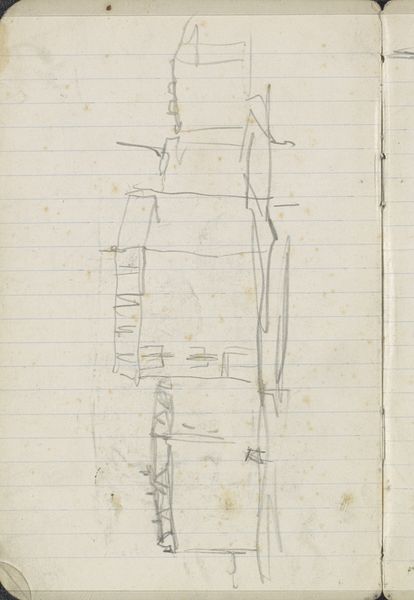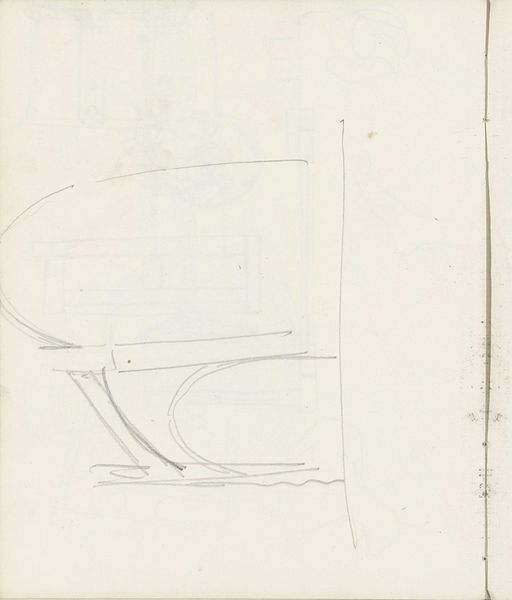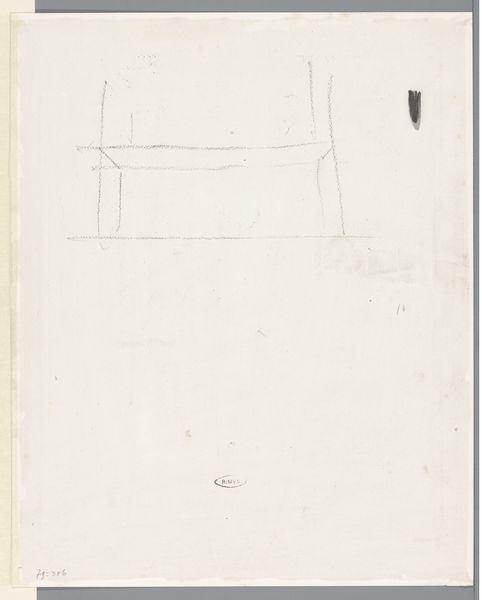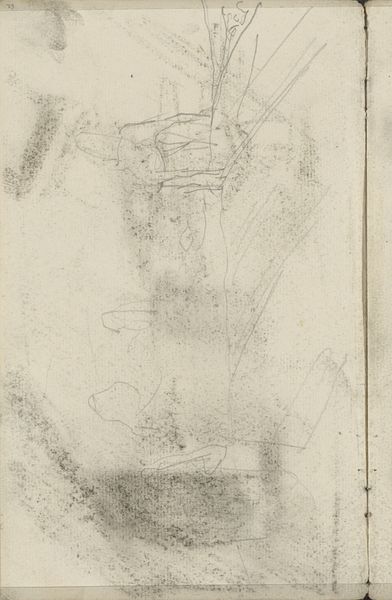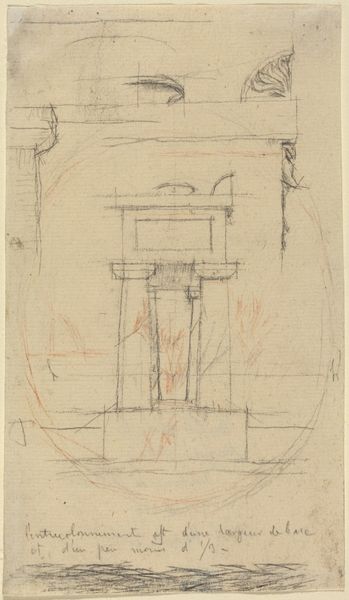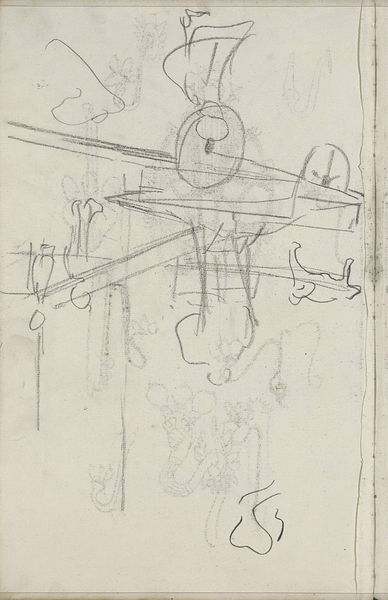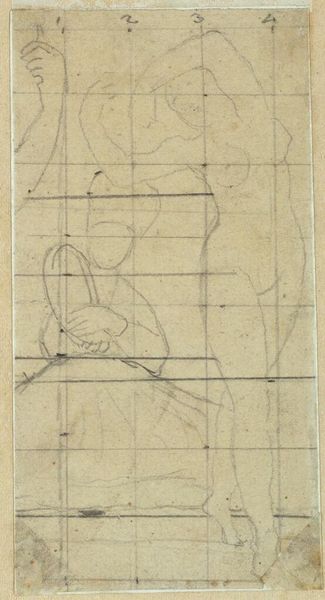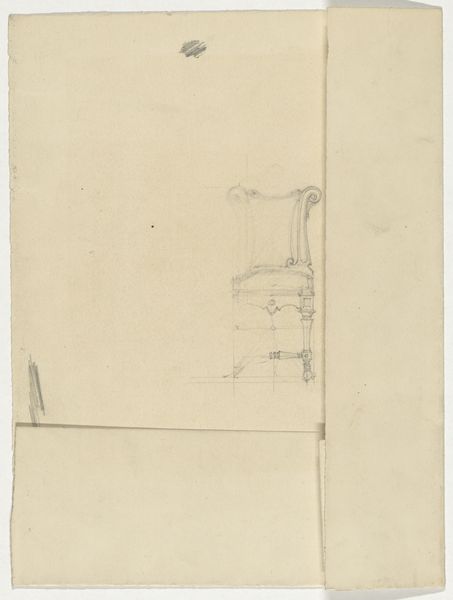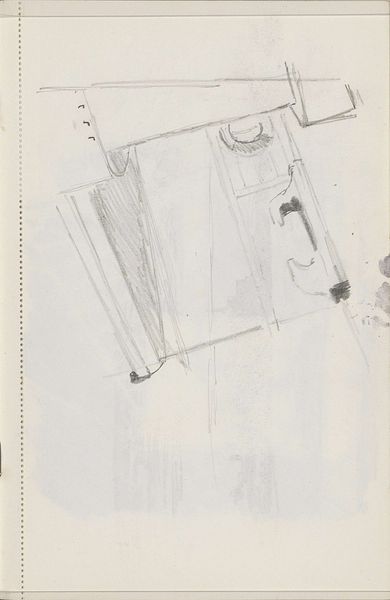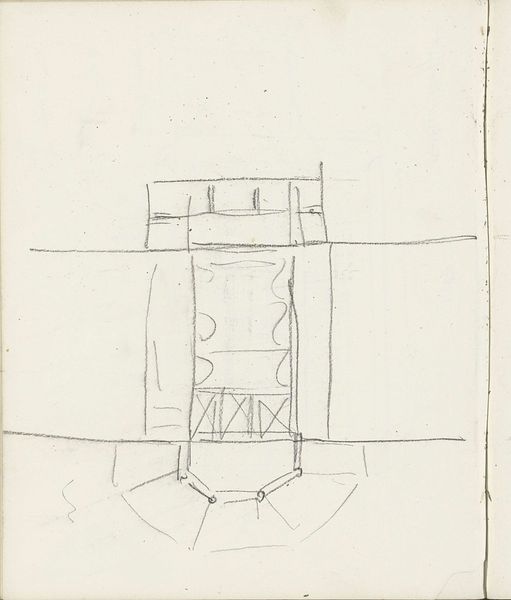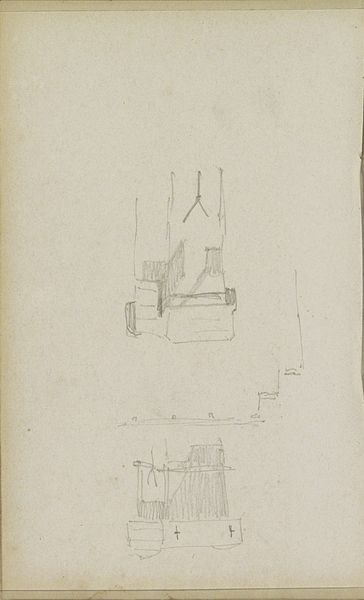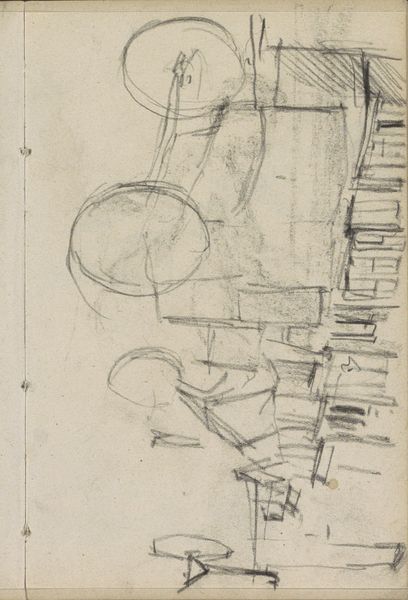
drawing, paper, pencil, graphite
#
drawing
#
aged paper
#
toned paper
#
light pencil work
#
homemade paper
#
old engraving style
#
hand drawn type
#
paper
#
personal sketchbook
#
fading type
#
geometric
#
pencil
#
abstraction
#
line
#
graphite
#
sketchbook drawing
#
sketchbook art
Dimensions: height 390 mm, width 263 mm
Copyright: Rijks Museum: Open Domain
Editor: This is Reinier Willem Petrus de Vries's "Kader," made sometime between 1884 and 1952, with graphite and pencil on paper. The geometric forms give it a really structured feel, but it’s hard to tell what the artist was going for. What do you see in this piece? Curator: Well, let’s consider the grid first. Its presence makes me think about systems of order and control, ideas often reflected and critiqued within the colonial context during de Vries's time. How might this imposed structure, literally drawn onto the paper, speak to broader power dynamics? Editor: So you’re saying the underlying grid could be a reference to imposed systems? I hadn't thought about that. Curator: Exactly. And note the "fading type" and "old engraving style" labels in the AI tag – could these relate to systems of language, how it shifts and is interpreted depending on historical frameworks? Also, the abstract figure within. Is it contained by or struggling against that framework? It appears central, yet vulnerable to being erased within the grid. How does that tension speak to ideas about marginalized identities within broader structures of power? Editor: That’s a great point about the figure within the grid. It seems trapped but also defiant. I’m starting to see this less as an abstract exercise and more as a kind of social commentary. Curator: Precisely! Art has an important social function, doesn't it? It encourages questions, challenges narratives, and helps us better understand our positions in a world of hierarchies. De Vries's “Kader” asks us to think deeply about systems of order and those who exist inside them. Editor: This has completely changed my perspective. I initially saw a simple sketch, but now I recognize this "Kader" as a layered commentary on societal structures. Curator: That's the beautiful thing about art; it’s always offering new insights, pushing us to question and analyze the world around us.
Comments
No comments
Be the first to comment and join the conversation on the ultimate creative platform.
